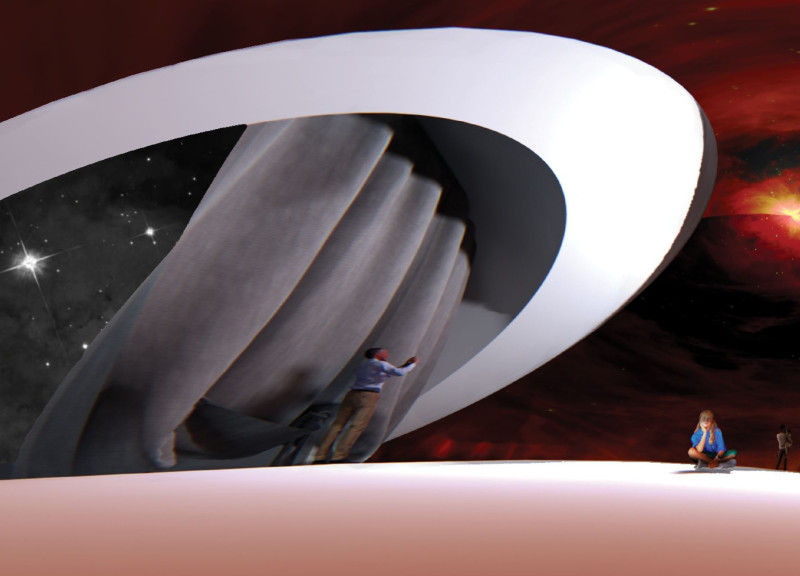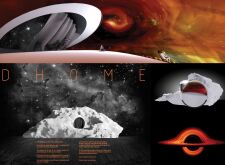5 key facts about this project
The design explores the concept of "home" by focusing on themes of transformation, community, and personal identity. Located in a densely populated urban area, it combines the elements of space and experience. The overall design conveys that home is not just a place but an evolving space shaped by the life of the people who inhabit it.
Conceptual Framework
The project begins by framing home as something that originates from an abstract idea. It describes an “accident that started light-years ago in an extraterrestrial environment where time and space bend.” This imaginative perspective allows for a broader exploration of how space can evolve. It invites a view of life, like architecture, as constantly changing and growing.
Embodied Experience
The design captures the essence of home as “formless, raw, rugged, and dirty.” Such descriptions promote a practical approach that values real experiences over artistic pretensions. The architecture is meant to be responsive, creating an inviting space where users feel connected to their environment. This focus on authenticity can foster resilience within the community, enabling people to engage trustfully and naturally with their surrounding space.
Emotional Engagement
The work draws on literary themes, particularly referencing "the Petit Prince," to emphasize the need for emotional understanding in design. It speaks to the fractured nature of modern community living, suggesting configurations that meet both collective and personal needs. By doing so, the design aims to inspire reflections on relationships and community ties, promoting a deeper interaction among individuals in shared spaces.
Spatial Metaphors
A strong metaphor runs through the design, describing it as a "Dhome" that "scratches on Earth." This imagery conveys the idea that the structure interacts dynamically with its urban context. It suggests an architecture that captures experiences and time while serving as a gathering point for community interaction. The design strives to create a real sense of place, pulling users in and encouraging meaningful connections.
Finishes are expected to reflect ruggedness and authenticity, grounding the architecture in the environment. These design choices invite users to think more deeply about their relationships with the space, creating a dialogue that goes beyond mere physical existence and nurturing a sense of belonging.



















































